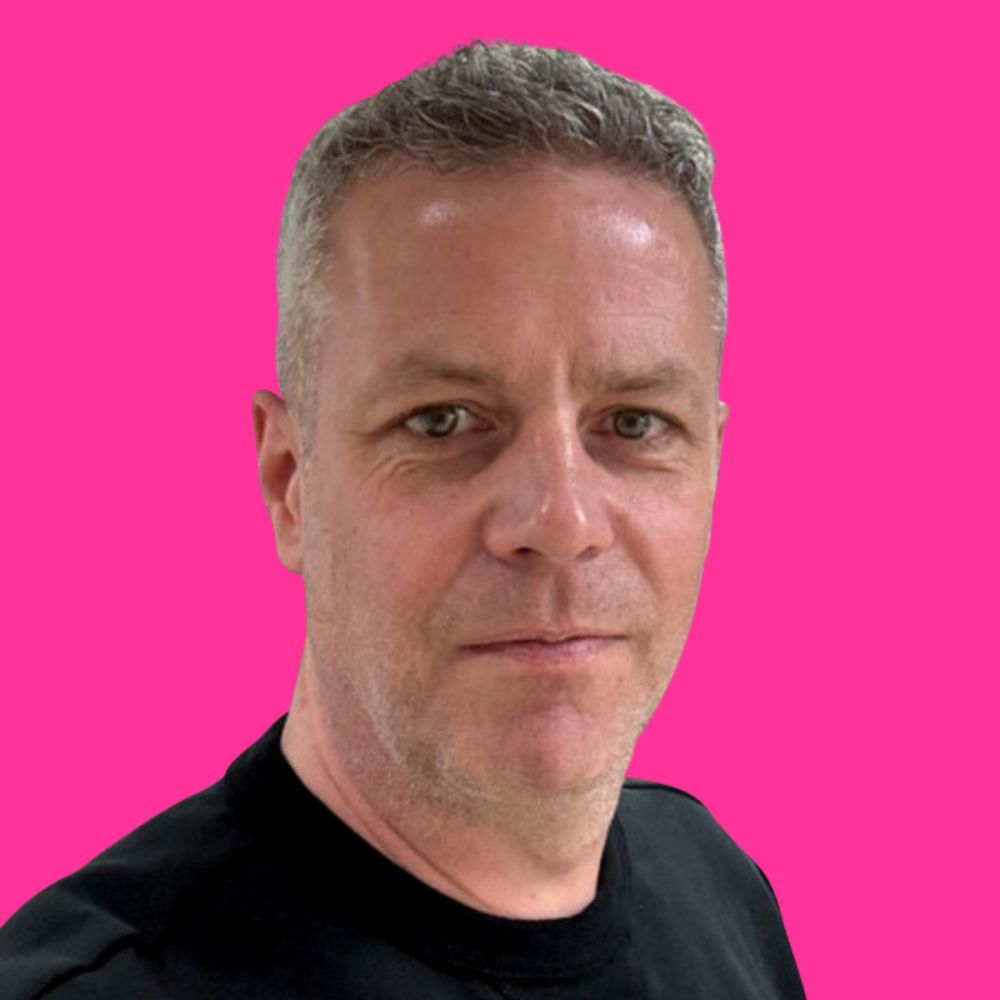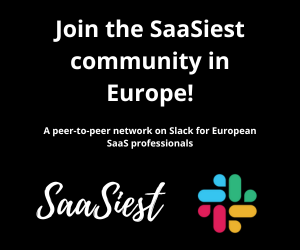If you’re interested in topics like this, you should join the SaaSiest CSO Network. Read more here: https://executive.saasiest.com/networks/sales
The SDR role is evolving faster than ever – and 2026 will be the year it transforms completely. In this roundup, top sales development leaders share their predictions on how AI, buyer behavior, and GTM strategy will redefine what it means to be an SDR.
From AI-augmented workflows and “mini-consultant” selling to GTM engineers and data-driven orchestration, their insights reveal a future where quality beats quantity, creativity outshines templates, and SDRs become true strategic partners in revenue generation.
If you lead or work in Sales Development, this is your roadmap to what’s next – and how to prepare before the playbook changes for good.


Pontus Holmlund
Head of Sales Development
Kindly
As AI becomes cheaper and requires less and less experience setting up for outbound messaging, we will see it creep into previously underutilized channels. It won’t be the first time that automation overloads a channel into oblivion (regular post, email, LinkedIn, and even social media). The solution to this for companies utilizing automation for outreach is almost always: Which channel has my competitors not managed to push our buyers away from yet?
With more content being produced and more noise created, organizations that double down on educating their SDR teams about sales will be the ones to see success. Why? Because it requires effort, and things that require effort will always stand out from the crowd.
By the end of 2026, we will see a new wave of SDR hiring. This will be the result of AI outbound dropping in efficiency or not meeting expectations. Similar to what happened after email automation took over, and due to the low conversion rate, it burned through the total addressable market for companies, leaving a sour taste in the mouths of their prospective customers.


Matthew Mothersole
Director, Global Sales Development
Valona Intelligence
Balance activity with intelligence.
We are finally reaching the point where activity alone is no longer the key metric of success. SDRs must be valued for the commercial and competitive intelligence they uncover. Many teams have gone through “scale down to grow up” phases, restructuring around smarter workflows. In scale-ups, where GTM has become the new catchphrase, SDRs are now fully embedded in go-to-market motions, bridging marketing, product, and sales with real-time market feedback.
Pair automation with human judgment.
In the enterprise world, AI adoption will remain slower and more complex. Many teams still rely on generic AI-generated emails, but more agentic and context-aware solutions are emerging. The real leadership challenge will be maintaining oversight and ensuring SDRs use AI as a tool for insight, not a crutch for volume.
Redefine the SDR as an orchestrator.
The most effective SDRs in 2026 will act as orchestrators of the buyer ecosystem. They will connect multiple stakeholders and functions across channels, feeding valuable insights back into marketing and product. Leaders should coach SDRs to operate as market detectives, measuring success not by meetings booked but by insights delivered and multi-stakeholder engagement achieved.


Joost de Stigter
Director, Sales Development
Optimizely
The standard process of qualification – discovery – demo will change. Prospects are significantly more informed due to easy information access by AI, and will start to ask for demos/trials early in the process. I’m prepping my SDR to be way more diligent in understanding the three whys and take control over the process in a more descriptive but very flexible way. Urgency is all on the prospect side, and creating it from a sales pov can only be done by having deep knowledge about the prospect
AI will be a core element in sales development; however, I don’t see a future for AI in personalisation at scale. The human connection needed to build trust will become more important and will be needed to beat seller’s deficit disorder. Train the team on how to use AI for efficiency and not just scale
TOFU blindness will be the biggest challenge, marketing conversion will keep going down, and quick wins I expect to become less and less. Training the SDRs on following a key path for outbound with a very focused plan and compensating them on progress in an account vs visible opportunity/meetings set will be a key driver in creating visibility, but also predictability.


Thierry Yadan
Head of Sales and Business Development
ZAION
SDR will be AI augmented, helping them to automate and improve their daily work.
SDR will move to outbound cold calling with better efficiency thanks to a better understanding of prospects’ pains,
SDR will be recognised as a full-time job, less painful and more efficient thanks to AI, offering, for the best of them, the opportunity to be promoted as Sales Executives.


Md Riaz Uddin
Sales Development Manager
Sievo
Learn to prioritize your key accounts
In any given month/quarter, you need to know which accounts to prioritize the highest. Rather than casting your net wide, the better strategy is to go deeper. Sit down with your AE(s), learn which accounts have had the most interactions in their territories or show meaningful signs, and come up with a mutual plan of attack. AE goes for a top-down approach, while you go for bottom-up. Trust me, co-prospecting works!
Ruthlessly protect your calendar
Always work in blocks. No matter how silly it sounds, remember to have dedicated time for even the smallest type of work. Trust me, checking Slack notifications in every other group might seem trivial, but it adds up over time. Check your notifications in dedicated blocks. Check your emails in dedicated blocks. Eliminate non-essential internal meetings as much as possible.
Learn how to highlight your success
Corporate culture is all about marketing yourself. No matter how hard you work or what results you bring, it matters little if higher-ups don’t notice it. In your one-on-ones, be as detailed as possible about your activities and achievements. Learn how to tie your outputs to company priorities. Make it easy for your manager to always be in the loop on what’s happening and never wonder what you are up to. When the time comes, these will speak volumes.


Zara Ramtohul
SDR Team Lead
Sociabble
‘With the rise of AI’ is something we hear too often, but it will be reshaping prospecting, not by replacing SDRs, but by forcing us to evolve. In 2026, the SDR who wins will be the one who shows up as a mini-consultant with a real personality. Yes, using AI for speed, but still mainly relying on authenticity and human connection to actually open doors.
Prediction 1: Continuous Touchpoints > High-Volume Outreach
Spray and Pray is over (bye bye!)
In 2026, SDRs that run smaller account lists with human touchpoints on calls and LinkedIn will stand out.
Email shifts to a support act – it provides credibility post-call and to forward internally, but it’s no longer the main show. No matter how beautiful your email is, it won’t stand out in a sea of spam.
Real conversations, however, where you can show off how you listen, how you ask questions, and how you make the other person feel heard….now that will stand out and get you that meeting booked.
You become what AI cannot: an expert PLUS a human.
Prediction 2: AI handles the Research, Humans handle the delivery
AI will handle the admin like summarising relevant news and giving context.
That doesn’t just raise the bar for the SDR, it changes the shape. The bar becomes a banana, an orange, or really anything that isn’t a bar. It changes how we need to work.
A lot of people are letting AI write outreach for them, and those perfect, generic em-dash-filled messages are so easy to spot.
If you can stand out by injecting each interaction with:
-personality
– tone of voice
– body language
– charisma
– and the ability to make someone feel heard
Combined with the expertise of AI…then you’re cooking.
Yes, use AI to guide you, but make sure to let your personality or “you-ness” drive you.
Prediction 3: SDR? Don’t you mean consultant?
The SDR role is going upmarket and more strategic.
We aren’t meeting machines, we set the tone for the entire sales cycle.
Cold Calls need a plan, and that starts from finding a framework (which is easier said than done)
My key has been Cold Call ALGO by Justin Michael and Charles Needham. But you can’t just read the book and expect magic. It takes at least a few hours of:
– Digesting
– Mapping
– Adapting it to your world
Otherwise, it just sits in your head and never makes it into your calls.
On the very first afternoon using them, I booked three enterprise meetings, two of which turned into demos. Not because I talked or dialed more, but because I showed up as a calm, structured, consultative human.
Even if you want to buy a hat, if you walk into a hat shop and don’t trust that the person knows how to style hats, you probably won’t buy.
Sure, you could just order one online. But you went to the shop because you wanted the experience: someone you trust, who knows hats, helping you find the perfect one. If that doesn’t happen, you’ll just go back to browsing online.
It’s the same with prospects. If you’re not able to guide them with structure and confidence, plus the knowledge they would expect from AI, then they’re less likely to trust you enough to agree to a meeting.
You’re not “just” an SDR, you’re a hat consultant, so own it!


Nicholas Mamet
SDR & BDR Team Lead DACH
Aircall
By 2026, SDR success won’t just be about volume; it will be about quality interactions and pipeline influence. As leaders, we will move away from only counting calls or emails and instead evaluate each interaction through conversion and conversation rates.
The SDR role will be defined by human impact
2026 will be the year to let humans do what humans do best: build relationships and tell valuable stories. Let AI take over the busywork, like note-taking during calls or pulling valuable insights, so your team can spend more time connecting with prospects.
Tip: Invest in your people and in regular learning sprints. Focus not just on product training, but also on negotiation, industry trends, and rapport building.
AI-Driven Workflows Will Be SDRs’ Productivity Partner
By 2026, top SDRs won’t just compete on volume, they’ll compete on impact. AI will take over pre-call research, prospect intelligence, and post-call follow-ups, giving SDRs more time to focus on meaningful, personalized engagement. We’re preparing by implementing AI tools that optimize both preparation and follow-up, and by training our team to turn insights into strategic, high-value conversations.
Tip: Use AI to streamline both pre- and post-work, and hold regular coaching sessions to help SDRs translate insights into human-centered interactions that drive results.
Authenticity and Insight Will Set SDRs Apart
By 2026, mass emails and generic outreach won’t cut it. The SDRs who stand out will combine AI insights with a human touch, tailoring every conversation to the prospect and using multi-channel strategies like video and social outreach. We’re preparing by coaching our team to go beyond the standard playbook, emphasizing authenticity, empathy, and value-driven storytelling. In a world full of automated messaging, genuine human connection will be the ultimate competitive edge.
Tip: Empower SDRs to be real; personalized, empathetic engagement will always outperform scripts.


Manuel Schindler
Director, Global Sales Development
Collibra
The Sales Development landscape is changing rapidly. Advances in AI, data intelligence, and shifting buyer expectations are completely reshaping what success looks like in pipeline creation. From my experience leading and scaling SDR teams, it’s clear that the traditional volume-focused approach is becoming outdated. The SDR of 2026 will be more strategic, creative, and closely connected to the entire go-to-market engine.
Here are my three predictions for how the SDR role will evolve and how I’m preparing my teams to stay ahead.
SDRs will become hybrid experts, blending AI-driven automation with sharp human insight
By 2026, automation will handle routine outreach tasks like lead qualification and follow-ups, freeing SDRs to focus on building deeper, more meaningful relationships. They’ll interpret nuanced buying signals and engage in complex conversations that require emotional intelligence and strategic thinking.
How I’m preparing: I’m investing in technology that empowers the team and focusing on developing their critical thinking and interpersonal skills to make every engagement resonate authentically.
Creativity and personal brand will be key differentiators for SDRs
AI-generated messaging will be ubiquitous, but it can’t replicate authentic voice or build real trust. SDRs who invest in cultivating their personal presence through storytelling, genuine curiosity, and engagement on professional platforms will stand out and capture attention.
How I’m preparing: My teams are encouraged to bring their unique personalities into every interaction, using empathy, humor, and storytelling to connect beyond just business.
SDRs will evolve into strategic partners within pipeline orchestration
The role will extend well beyond lead generation. SDRs will work hand in hand with Marketing, RevOps, and customer-facing teams, using frontline insights to influence account segmentation, messaging, and deal acceleration. They’ll become key drivers of strategic revenue growth.
How I’m preparing: I ensure that the intelligence SDRs gather flows into a broader strategy, shaping campaign design, ideal customer profiles, and territory plans for maximum impact.
Looking ahead
Tomorrow’s SDRs will win by understanding more deeply, not by contacting more prospects. Sales Development is shifting from simple execution to intelligent orchestration. As a leader, my goal is to build teams that think strategically, connect authentically, and innovate continuously in this data-driven environment.
This is where the future is headed – and where I’m focused on leading my teams.


Tove Verngren
Director Sales Development
Voyado
GTM Engineer – bringing data into the pipeline
The next evolution of Sales Development is part tech, part talent.
More teams are adding a new role, the GTM Engineer. This is the person who connects all the data dots behind your pipeline.
The goal is to reduce manual tasks and set up SDRs for success so they can spend time on the right accounts and contacts that convert into pipeline.
At Voyado, we’re exploring this option for next year, leveraging AI and data to get insights across the revenue team, helping us automate, analyze, and act faster.
SDRs will thrive where it’s complicated
SDRs create the most value where the buying journey is complex and requires guidance in making a decision, where it’s multi-stakeholder, high-stakes deals.
It’s less about booking meetings, it’s about building a pipeline that drives revenue and helps us grow. To do that, we need to connect insights, timing, and build the right narrative to convince customers to choose us.
We’ve already shifted focus from volume to quality, which we will continue doing in 2026, increasing conversion rates and making sure each reach-out is thoughtful, every account treated as a diamond. Personalisation is still key to succeeding and building relationships.
SDRs are your future AEs (and more)
The best SDRs today are tomorrow’s AEs, AMs, and leaders.
That means SDR leaders need to spend more time coaching than reporting, and build clear growth paths from day one.
The highest accomplishment is when I see people grow within our team, both transitioning into new roles or growing within the SDR function. We see SDR as the talent pipeline for the whole GTM org.




